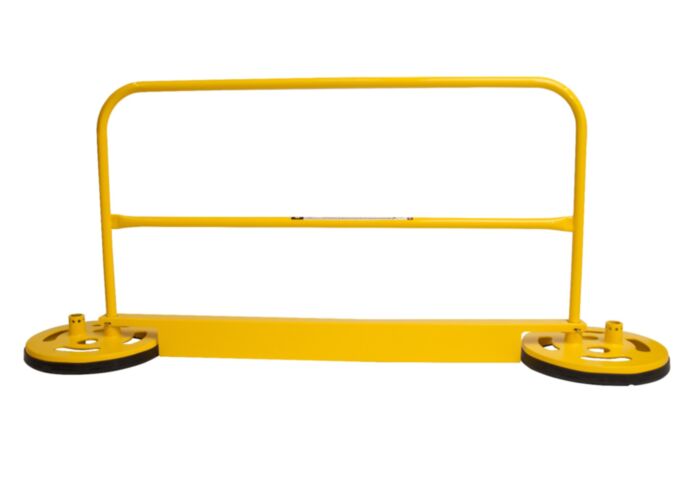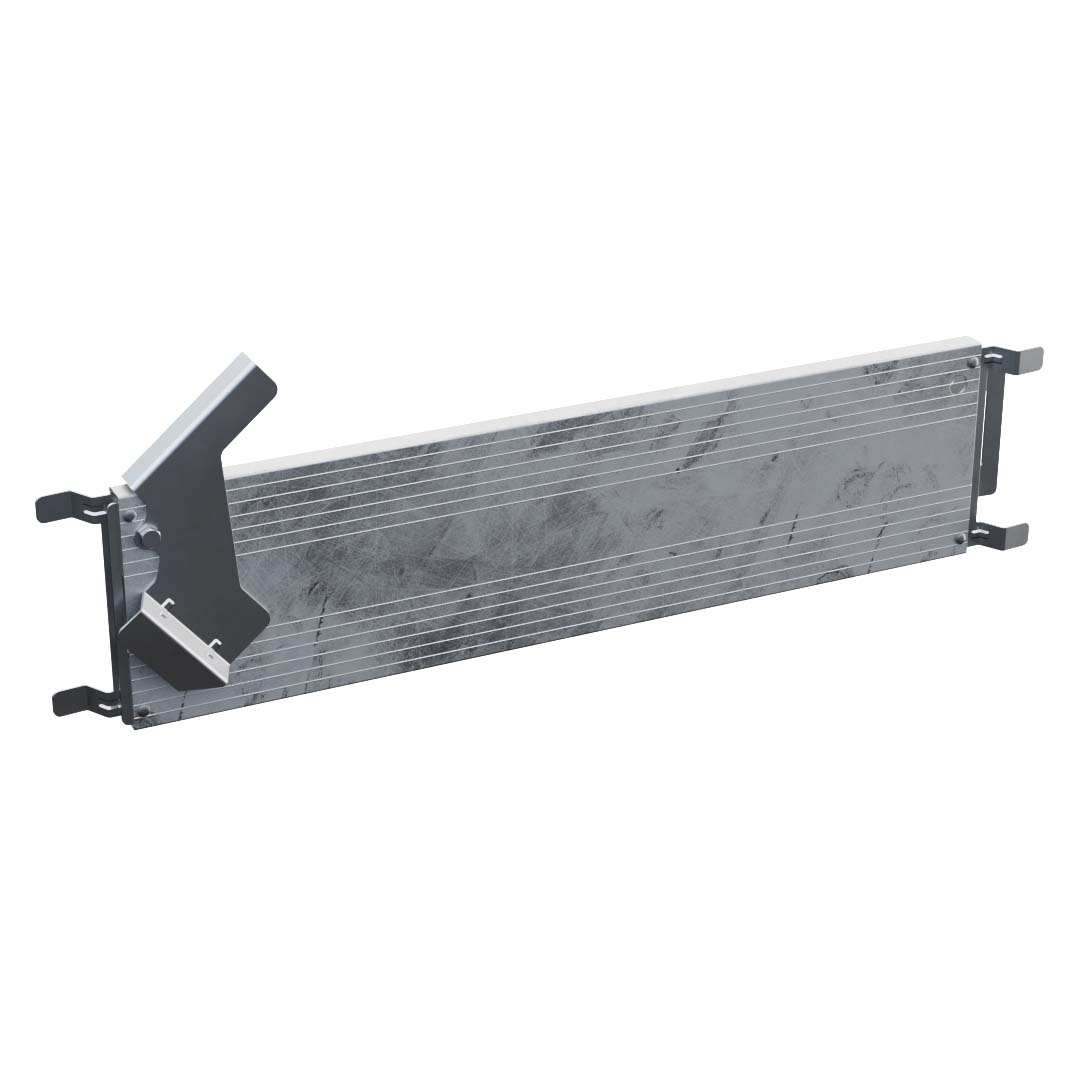Toeboards During Construction: What Are They And Why Are They Important?
What are toeboards during construction? Toeboards are horizontal barriers installed at the edges of elevated platforms, scaffolding, or walkways to prevent tools, materials, and debris from falling. They are a critical safety measure that ensures worker protection and minimises risks on construction sites.
Toeboards for construction serve two main purposes: protecting workers below from falling objects and preventing tools and materials from sliding off work surfaces. By acting as a physical barrier, they reduce the likelihood of accidents, which are common in high-risk environments such as construction sites.
These barriers are not just safety additions—they are also legally required under UK safety regulations, such as those enforced by the Health and Safety Executive (HSE). Construction companies that fail to install toeboards risk non-compliance, fines, and serious workplace accidents.
Toeboards are typically made from materials like wood, steel, or plastic and are designed to be durable, cost-effective, and suitable for different work environments. Their presence on a construction site demonstrates a proactive commitment to safety, helping to protect both workers and the project timeline.
In this article, we ar Elite Safety Solutions will explore what toeboards are, their benefits, and how they meet industry safety standards. Whether you’re managing a large-scale project or a smaller site, understanding the role of toeboards during construction is essential for creating a safer, compliant, and more efficient workplace.
What Are Toeboards And How Are They Used In Construction?
Toeboards are horizontal barriers fixed at the base of elevated work areas such as scaffolding, platforms, or walkways. They are specifically designed to prevent tools, materials, and debris from falling off the edges, ensuring safety for both workers and those below. In construction, where the risk of falling objects is high, toeboards act as a simple yet effective solution to minimise hazards.
Where Are Toeboards Installed?
Toeboards are commonly installed on scaffolding, temporary platforms, stairwells, and rooftop edges. Their purpose is to create a secure barrier that stops objects from slipping or being knocked off elevated surfaces. For example, when workers perform tasks on scaffolding, tools or materials might accidentally be displaced. Toeboards catch these items, preventing them from falling and potentially causing harm.
How Do Toeboards Function?
The functionality of toeboards lies in their placement and design. Installed at the edge of work areas, toeboards are typically raised a few inches above the platform surface. This raised edge acts as a physical stop, ensuring that even small items like screws or tools do not fall. Toeboards work in conjunction with other safety measures, such as guardrails and safety nets, to provide comprehensive protection on construction sites.
Types of Toeboards in Construction
There are various types of toeboards designed to suit different construction needs:
- Wooden Toeboards: Commonly used for temporary scaffolding, these are cost-effective and easy to install.
- Metal Toeboards: Made from steel or aluminium, these are durable and ideal for long-term projects or areas exposed to harsh weather.
- Plastic Toeboards: Lightweight and corrosion-resistant, these are often used in specialised environments where rust is a concern.
Why Are Toeboards Important?
Toeboards provide a vital layer of protection on construction sites. By stopping falling objects, they help prevent injuries and accidents, ensuring compliance with safety regulations. Furthermore, they protect equipment and materials from damage, reducing downtime and project delays caused by lost or broken tools.
Toeboards are a simple yet indispensable feature in construction. Their ability to prevent falling hazards ensures that both workers and projects remain safe and efficient.

Why Toeboards During Construction Are Important For Safety
Toeboards for construction safety are important for maintaining safety on-site, protecting workers and ensuring the smooth progress of projects. By acting as barriers that prevent tools, debris, and materials from falling off elevated surfaces, toeboards address one of the most common hazards on construction sites. Here’s why they are an essential safety feature:
1. Preventing Falling Objects: Construction sites often involve elevated work areas where workers use tools, equipment, and materials. Without toeboards, these items can easily slip off platforms or scaffolding, putting workers below at risk of serious injuries. Toeboards create a physical barrier at the edge of these surfaces, ensuring that items stay in place and don’t become dangerous projectiles. Even small objects, like nails or screws, can cause significant harm if they fall from height. Toeboards minimise this risk effectively.
2. Enhancing Worker Safety: Toeboards are part of a larger system of safety measures, including guardrails and personal protective equipment (PPE). Together, these measures provide comprehensive protection for workers, creating a safer environment where they can focus on their tasks without worrying about potential hazards. A site equipped with toeboards demonstrates a proactive approach to worker safety, which is essential for maintaining morale and productivity.
3. Reducing Accidents and Downtime: Accidents caused by falling objects can lead to significant project delays. Workers who are injured may require medical attention, while investigations and repairs can halt progress on-site. By preventing such incidents, toeboards help keep projects on schedule and minimise unexpected costs. A safe construction site is a productive one, and toeboards play a key role in achieving this.
4. Ensuring Compliance with Safety Regulations: In the UK, the Health and Safety Executive (HSE) requires construction sites to implement measures that protect workers from falling objects. Toeboards are often a mandatory component of these measures, particularly on scaffolding and platforms. Failure to comply with these regulations can result in fines, legal action, and reputational damage. Installing toeboards ensures compliance and helps avoid these consequences.
5. Protecting Equipment and Materials: Beyond safeguarding workers, toeboards also protect tools and materials from being damaged or lost. A dropped tool can break or become unusable, leading to additional costs for replacement or repair. Toeboards prevent such losses, making them a cost-effective safety solution.
Toeboards during construction are not just a legal requirement but a vital investment in safety. They protect workers, reduce risks, and ensure projects run smoothly and efficiently.
Common Materials And Designs Of Toeboards For Construction
Toeboards come in a variety of materials and designs, each suited to specific construction needs. Selecting the right type of toeboard is essential for ensuring safety, durability, and compliance with site requirements. This section explores the most common materials used in toeboards and the design considerations that make them effective in construction.
1. Materials Used for Toeboards
Toeboards are typically made from materials chosen for their durability, cost-effectiveness, and suitability for specific environments:
- Wooden Toeboards: These are widely used for temporary setups such as scaffolding or short-term projects. Wood is an affordable and easy-to-install option, making it a popular choice. However, wooden toeboards may not be ideal for long-term projects or environments exposed to harsh weather, as they are prone to wear and rot.
- Metal Toeboards: Made from materials like steel or aluminium, metal toeboards are durable and resistant to heavy impacts. Steel toeboards are particularly strong and suitable for long-term projects, while aluminium offers a lightweight alternative. Metal toeboards are often galvanised to resist corrosion, making them ideal for outdoor use or wet environments.
- Plastic Toeboards: These are made from high-strength plastics like polyethylene, which are lightweight, corrosion-resistant, and easy to handle. Plastic toeboards are commonly used in specialised environments, such as chemical plants or food processing facilities, where resistance to rust and chemical exposure is critical.
2. Design Features of Effective Toeboards
The design of toeboards is just as important as the material used. Effective toeboards incorporate features that enhance safety and usability:
- Height: Toeboards are typically designed to extend at least 150mm above the platform surface, as recommended by UK safety regulations. This height ensures that tools and materials are effectively stopped from falling off the edge.
- Fixing Mechanisms: Toeboards must be securely fixed to scaffolding, platforms, or walkways to prevent them from becoming loose or dislodged. Common fixing mechanisms include brackets, clamps, and bolts, which ensure a stable installation.
- Durability: Toeboards are designed to withstand daily wear and tear, as well as impacts from falling tools or materials. Materials like steel and high-strength plastics are particularly effective in high-traffic or heavy-duty environments.
3. Choosing the Right Toeboard for Your Project
The choice of toeboard depends on the specific requirements of your project. Temporary scaffolding might benefit from wooden toeboards due to their affordability and ease of use, while long-term or outdoor projects may require galvanised steel toeboards for added durability. It’s important to consider factors such as the environment, expected load, and potential exposure to weather when selecting toeboards.
4. Customised Toeboards for Unique Needs
Some projects may require customised toeboards to meet unique specifications. For example, curved platforms or irregular structures may benefit from flexible plastic toeboards or pre-fabricated metal designs. Customised solutions ensure that safety is maintained even in non-standard construction scenarios.
The material and design of toeboards during construction play a vital role in their effectiveness. By selecting the right type for your project, you can ensure safety, durability, and compliance with industry standards.

How Toeboards For Construction Meet Safety Standards
Toeboards are more than just safety additions—they are a mandatory component of workplace safety in construction and are governed by strict regulations. Ensuring that toeboards meet safety standards is critical for protecting workers, maintaining compliance, and avoiding potential legal and financial repercussions. In this section, we’ll examine the key safety standards that apply to toeboards during construction and how these barriers help sites adhere to them.
1. UK Regulations for Toeboards: In the UK, the Health and Safety Executive (HSE) outlines clear requirements for working at heights, including the use of toeboards. According to HSE guidelines, toeboards must be installed on scaffolding, platforms, and elevated work areas where there is a risk of tools, materials, or debris falling. The toeboards must be securely attached and should rise at least 150mm above the platform’s surface to effectively block falling objects. Failure to meet these standards can result in serious consequences, including fines, project delays, and reputational damage. Construction companies must ensure that all toeboards are installed correctly and inspected regularly to maintain compliance.
2. How Toeboards Support Site Safety: Toeboards are part of a broader system of safety measures that include guardrails, harnesses, and safety nets. Together, these components form a comprehensive fall protection strategy, safeguarding both workers and passers-by. Toeboards specifically address the risk of falling objects, which is one of the most common causes of injuries on construction sites. For example, a dropped tool can cause significant harm if it falls from height, even if the worker wearing a harness is protected from falling themselves. Toeboards prevent such accidents by acting as a barrier, ensuring that items stay on elevated surfaces.
3. Regular Inspections and Maintenance: Meeting safety standards is not a one-time effort. Toeboards must be inspected regularly to ensure they remain secure and effective. Weather exposure, wear and tear, and heavy impacts can weaken toeboards over time, so routine checks are essential. Any loose or damaged toeboards should be repaired or replaced immediately to maintain compliance and safety.
4. Benefits of Compliance: Using toeboards that meet safety standards offers multiple benefits. Firstly, it ensures legal compliance, protecting construction companies from fines and legal actions. Secondly, it creates a safer working environment, reducing the likelihood of accidents and injuries. Finally, compliance boosts the company’s reputation, demonstrating a commitment to worker welfare and professional standards.
5. Working with Certified Suppliers: One way to ensure compliance is to source toeboards from certified suppliers who provide products that meet industry standards. Certified suppliers often offer installation support and guidance on maintenance, helping construction companies stay compliant over the long term.
Toeboards for construction purposes are essential for meeting safety standards and ensuring a secure work environment. By adhering to regulations and maintaining regular inspections, construction sites can minimise risks and create a safer space for workers and visitors alike.
Ensure Safety With Reliable Toeboards During Construction
Toeboards For construction are an essential safety feature that protects workers, equipment, and the overall efficiency of your project. By preventing tools, materials, and debris from falling off elevated surfaces, toeboards reduce the risk of accidents and ensure compliance with UK safety regulations. They are a simple yet highly effective solution that every construction site must prioritise.
Choosing the right toeboards involves selecting materials and designs that suit your project’s specific needs, whether it’s temporary wooden toeboards for short-term scaffolding or durable steel toeboards for long-term use. Regular inspections and maintenance are just as important as installation to ensure that toeboards continue to perform their role effectively.
At Elite Safety Solutions, we specialise in providing high-quality toeboards designed to meet safety standards and the unique requirements of your construction site. From guidance on selecting the best toeboards to support with installation and compliance, our team is here to help you create a safer work environment.
Don’t compromise on safety. Contact us today at 02393430067 to discuss your construction needs and discover how our reliable toeboards can protect your team and your project. Together, we can ensure that your site operates safely, efficiently, and in full compliance with regulations.
